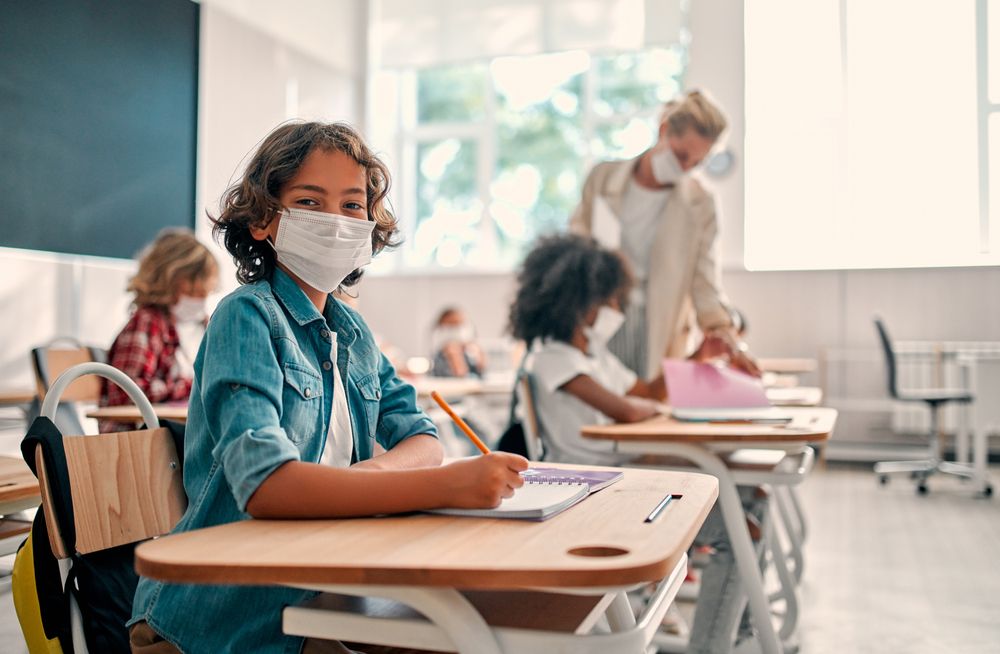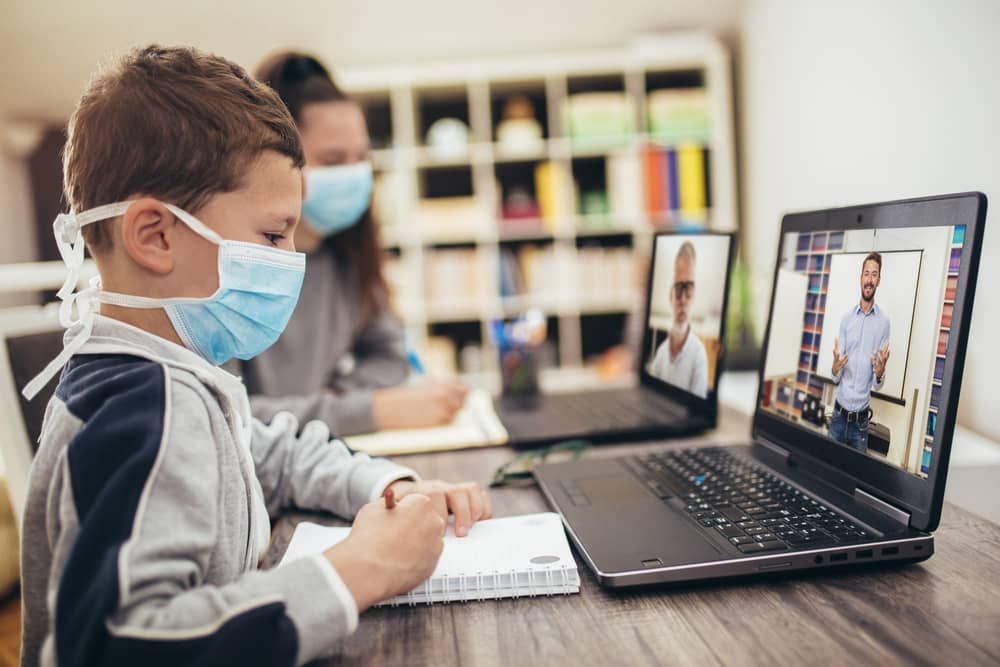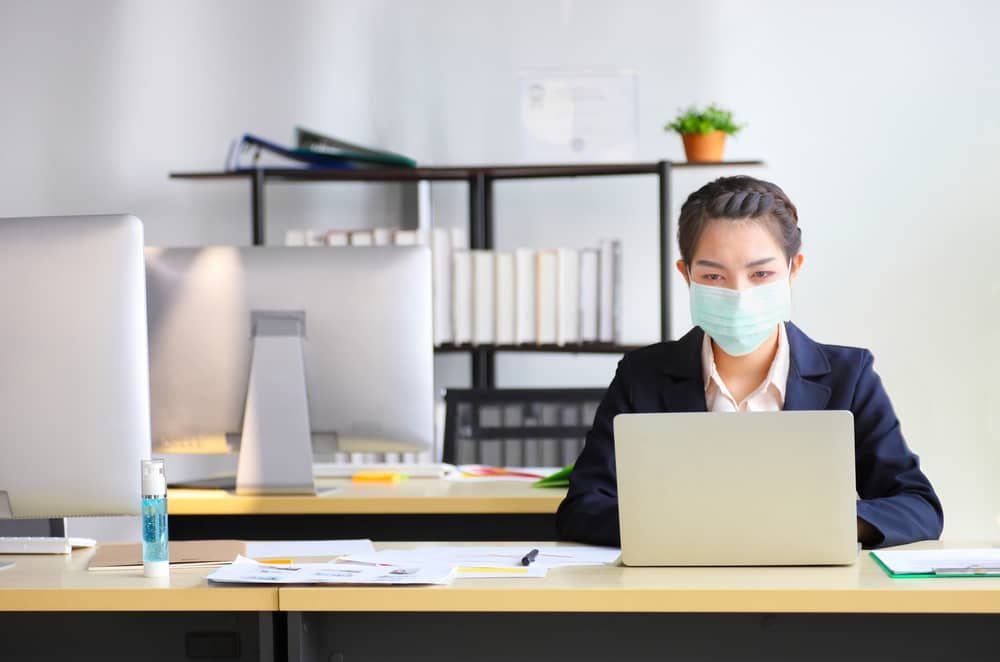What the American Rescue Plan Means for Your School District
School districts are about to get a lot of new funding thanks to the American Rescue Plan, but the question is: what’s the best way to use it?
4 min read
 Craig Badrick
:
May 17, 2021 5:12:37 PM
Craig Badrick
:
May 17, 2021 5:12:37 PM
With some states announcing plans for full in-person learning this fall, it’s time for schools to consider whether their networks and technologies are ready to support a safe return.
When the COVID-19 pandemic first struck, schools found themselves scrambling to meet a variety of new challenges as they suddenly shifted to remote learning. In the many months since that initial switch, remote education has become the new normal. Even as some schools have started allowing students to return to in-person instruction a few times a week, many have chosen to stick to the policies they initially adopted in response to the coronavirus.
A new plan announced by New Jersey governor Phil Murphy in late March threatens to upset the balance many schools have accepted over the past year. As of now, Governor Murphy says the plan is for all of New Jersey’s schools to return to full in-person classes five days a week for the next school year. It’s likely that other states will follow similar reopening plans, as well.
For the schools and students that have spent more than a year in some level of lockdown, the return to in-person learning will be an adjustment — especially since the coronavirus will still be an ever-present danger that demands schools monitor infections to prevent disease outbreaks. That means reopening will present a new challenge: making sure school networks are ready to support a safe return to full student capacity.
To prepare for the full return to in-person learning, schools will need to do more than simply enforce control measures like social distancing and create mask mandates; they will also need to invest in technologies that can help prevent the spread of infectious diseases through contact tracing efforts.
Yet before schools invest in tech to monitor the spread of COVID-19, they first need to ensure they have a modernized network infrastructure that will support new devices like smart cameras and contact tracing systems. This is a challenge that health departments and hospitals across the country have been navigating over the past year. Like those in public health spaces, schools can benefit from a predictive wireless site survey to determine if their networks are equipped to enable the technology which will help keep students safe. Once schools have ensured that their networks are strong enough to accommodate both new and existing technologies, district leaders can begin determining what solutions can best deliver the benefits of contact tracing.
COVID-19 contact tracing — a practice recommended by the Centers for Disease Control and Prevention (CDC) and other public health officials — is one of the best ways to prevent the spread of COVID-19. However, contact tracing can become complicated without the right technology in place.
Contact tracing work, which has been used to curb a number of different infectious diseases over the years, begins when a person tests positive for the coronavirus. Then it’s time to follow up with that person’s close contacts (anyone who might have been exposed to the virus through contact with the infected person) and ask them to self-isolate or quarantine to prevent further spread of the virus. Success depends on being able to identify all of the infected individual’s contacts quickly, given that many people with the virus are either entirely asymptomatic or contagious long before their COVID-19 symptoms appear.
Without effective contact tracers, a single positive case can quickly turn into multiple COVID-19 cases or even a major outbreak. That’s particularly concerning at a time when the coronavirus is expected to increasingly become a young person’s disease as children remain the only group unable to get COVID-19 vaccines, making them a more high-risk group than ever before. Even though children are generally infected at lower rates than their adult counterparts, the coronavirus still presents a serious threat to their health and well-being. As much of the world begins to open in the coming months thanks to the COVID-19 vaccine, schools could become new virus hotspots when they reopen in the fall. The best way to keep that from happening is by implementing strong contact tracing systems.
Fortunately, new contact tracing software is available to make this process easier. Smart cameras combined with solutions like Avigilon Control Center (ACC) video management software can help secure schools from external threats, as well as prevent the spread of the coronavirus. A great example of this is ACC’s Identity Search and Appearance Search feature, which makes it easy to search through the system and identify the path taken by an infected individual as soon as they test positive, so school officials know which areas may be contaminated for an effective follow-up.
Fixed video cameras like the Avigilon H5A Dome can then identify who else was in the same areas as the infected person during the relevant time frame. From there, school districts must alert those individuals of their potential exposure so they can take appropriate safety measures, including self-isolating and getting COVID-19 tests, before they have an opportunity to create new cases and spread the virus further.
Another system that has now become important to contact tracing efforts is wireless access points. Companies like Aruba Networks have designed new ways for their access points to be used as contact tracing tools through location analytics. Aruba access points can collect and analyze user location data to help schools quickly determine an infected person’s contacts and whereabouts. The solution’s advanced AI capabilities help ensure accuracy so school leaders not only know which people interacted, but also where that interaction and potential exposure occurred.
In addition to their contact tracing work, Aruba access points can help schools reduce the spread of the coronavirus and improve public health and safety through heat mapping. Because APs track people’s movements, they can identify hot spots where students are congregating. Schools can then use that information to lock down certain areas, change student traffic patterns, and adjust cleaning schedules to ensure the spaces with the highest density are cleaned most frequently.
There’s no denying that the return to full in-person learning after so much time in lockdown is going to take some adjustment, whether it happens this coming fall or further down the line. Luckily, with the right technology in place — and the networks to support it — schools can reopen as safely as possible before student vaccination efforts are fully in effect.
The best way to ensure your school has the best contact tracing tools in place (and that they are implemented correctly) is to work with a trustworthy partner like Turn-key Technologies, Inc. (TTI). With TTI, you not only get access to quality Avigilon and Aruba contact tracing systems, you also have the support of TTI’s managed services experts who can help you get the most out of these solutions.
Achieving a new normal for staff and students is going to take time and patience. Contact TTI today to learn how we can help make your school’s return to full student capacity safe and smooth.

School districts are about to get a lot of new funding thanks to the American Rescue Plan, but the question is: what’s the best way to use it?

The new COVID relief stimulus package includes $54.3 billion for K-12 schools nationwide to invest in their present and future success.

Contact tracing can help businesses adapt to the “new normal” by minimizing the chances of a COVID-19 outbreak when your employees resume in-person...